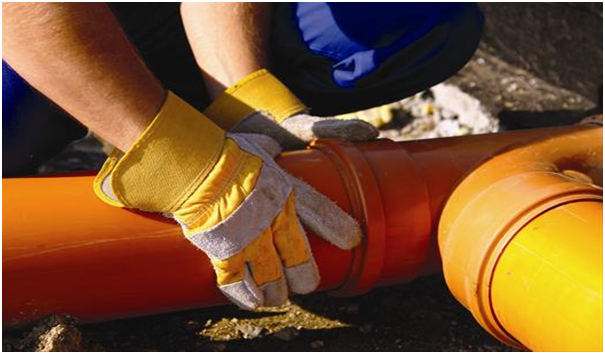Installing and Replacing Soakaways
 When the kitchen sink, bath or shower becomes blocked, the cause usually is hair or grease. These can be removed quickly with a plunger, a commercial drain de-blocker, or the universal solution of baking soda and vinegar.
When the kitchen sink, bath or shower becomes blocked, the cause usually is hair or grease. These can be removed quickly with a plunger, a commercial drain de-blocker, or the universal solution of baking soda and vinegar.
If the problem persists, the issue can be leaf blockage in an outside drain, root growth within it, or even stones or cement that may have fallen into the drain during building work. A professional can generally solve this problem quickly with water jetting treatment.
Old drains
Householders are faced with an entirely different problem if old drains have collapsed. This is a common problem with Victorian and Edwardian houses where clay drains age and 100-year old porous joints have deteriorated over time. It can be an expensive undertaking to repair them and require a reliable contractor for the work.
What are Soakaways?
Soakaways in old houses are a common and overlooked problem. Rainwater in many houses usually flows down the roof, to a gutter and drain pipe and into a public drain or sewer. This is called “surface water” or “run off” in the water industry. But many houses, especially of Victorian and Edwardian age, homes built close to rivers and even houses built during the 1960s, have soakaways.
In their simplest form, these are pits filled with stones below the end of the drain pipe. They can be about one metre deep and between 30 and 75 centimetres wide and extend across parts of a garden. The drain water flows into the pit, through the gravel and stones and disperses in the garden. The channel is covered with earth over the top.
Finite life
The problem with soakways is that they have a finite life. The channels silt up and fill with leaves and other debris. A DIY solution is to dig up the pit, remove the silt and debris, refill it with gravel and cover it over again with earth. But a more efficient, modern solution is to use a perforated plastic box that is purpose made and acts as a drainage channel in the pit.
New designs
The plastic box is wrapped with a geotextile that prevents soil and silt from getting into the holes and blocking the water flow. Rainwater flows from the drain pipe into the box and out through the perforations and infiltrates the surrounding ground. The length of the drain ranges between three and eight metres in an average home. There are more elaborate designs of multiple pits in herringbone shapes for larger buildings.
Regulations
In Victorian times, builders paid little regards to the effects of the soakaway water on the local ground. Today, the design of soakaways is set by regulators and local bylaws to meets strict conditions. The water outfall should flow into ground with sufficient infiltration capacity so that it does not cause flooding. The possibilities of accidental spillage have to be prevented and groundwater should be protected.
If you are planning to install new soakways or repair older ones, find reliable drainage contractors at Top Tradespeople who will advise you on the best design for your home and install it professionally.

Category: Business, Home Renovation






Comments (2)
Trackback URL | Comments RSS Feed
Sites That Link to this Post